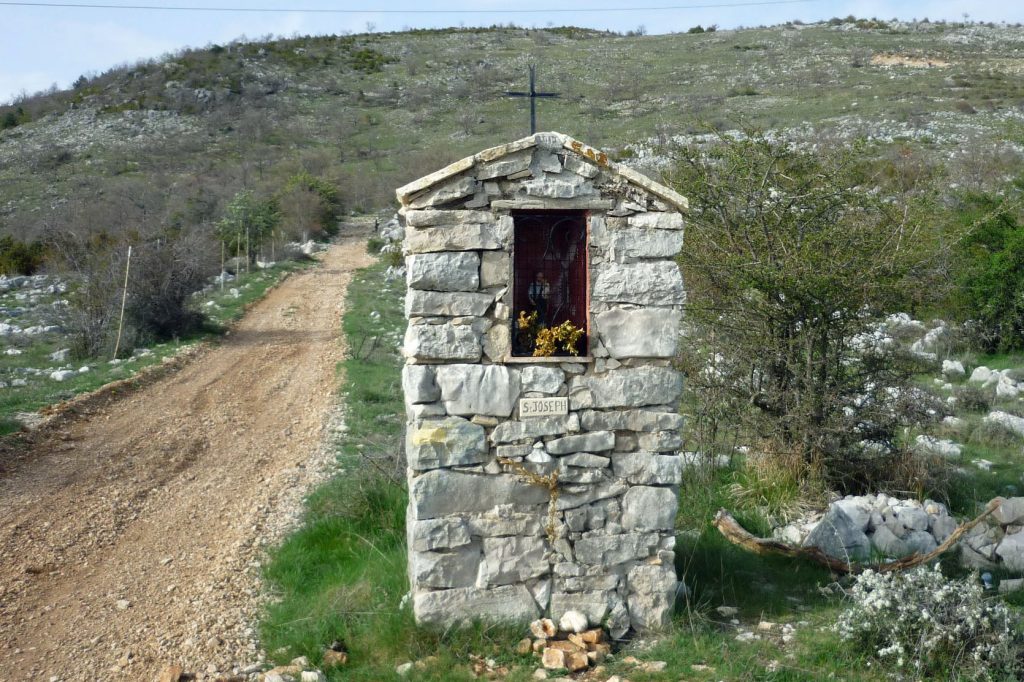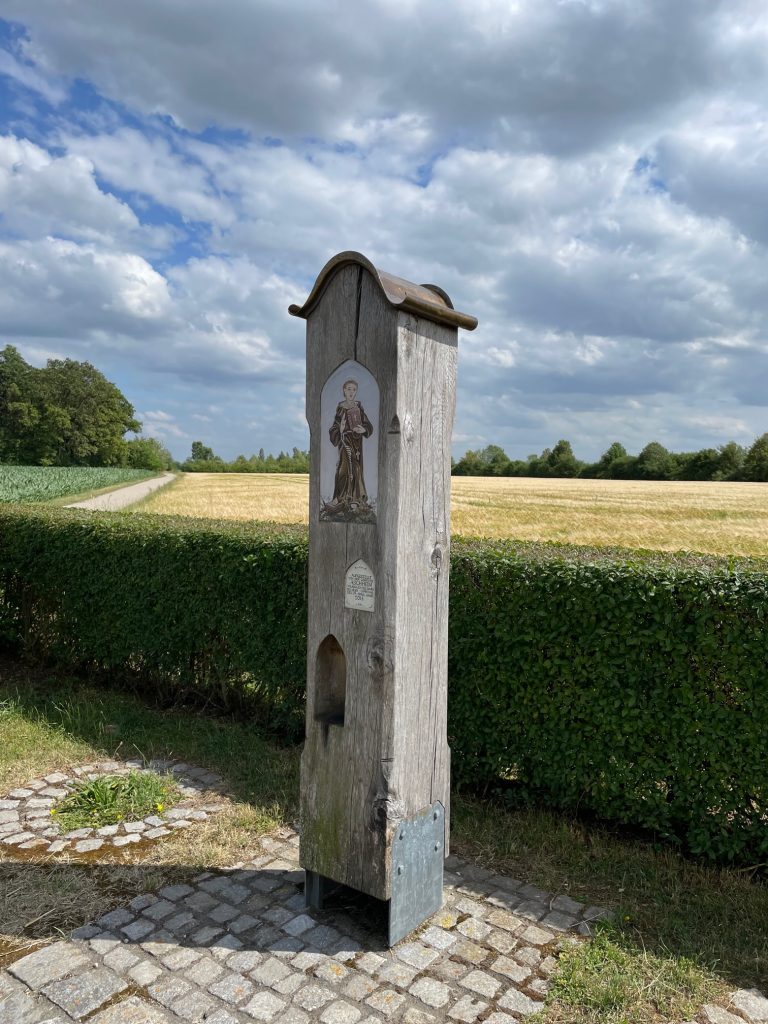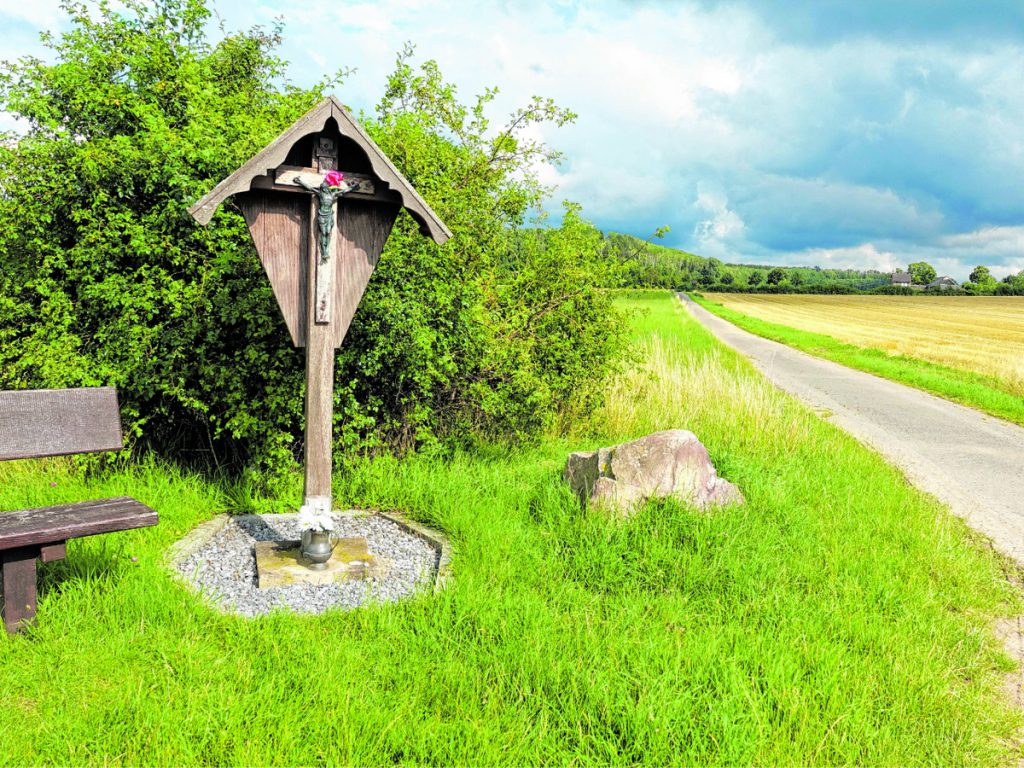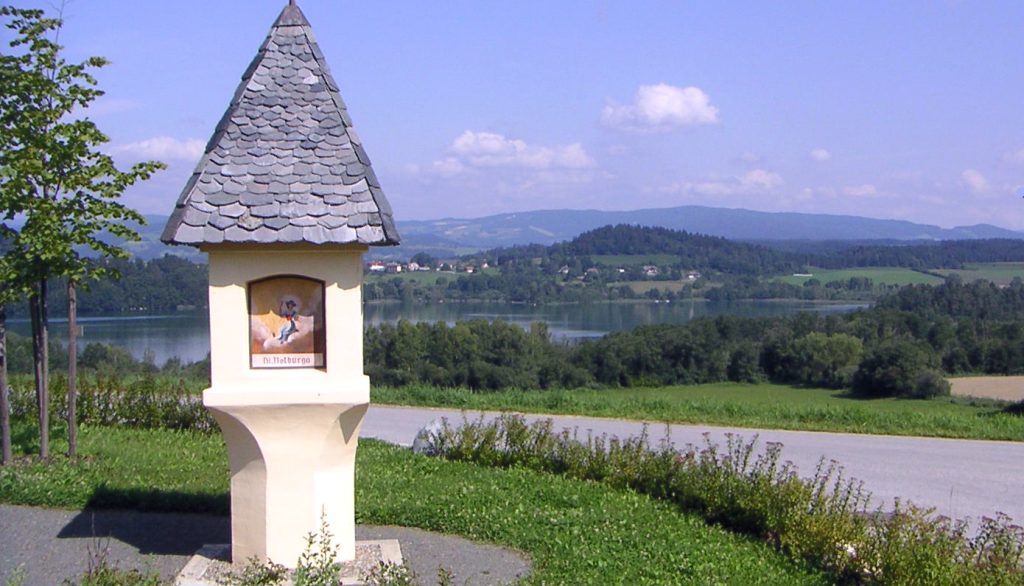During the Middle Ages, crosses began to be erected on roads or crosses; it is attributed to Pope Leo III, in 779, the phrase: "Let crosses be erected at the corners of the roads where people usually meet"; but even somewhat earlier, in the seventh and eighth centuries, the so-called "high crosses" spread in Ireland and Anglo-Saxon countries, from where they passed, for example, to Spain. While in the Iberian Peninsula stone crosses or road crosses predominate, many of them related to the Camino de Santiago, in Germany, Austria and Switzerland they are made of all kinds of materials -stone, metal or wood-. Also in this cultural sphere their origin goes back to the Middle Ages; but, since the Protestant Reformation, this popular devotion was reserved to the regions that remained Catholic, such as the Rhineland, Bavaria, Austria and some parts of Switzerland.
The Bildstock
Among the many types of crossroads, perhaps the most typical of the Alpine regions is the so-called "Bildstock" or "Bilderstock" ("picture/image hut"). However, although it is usually associated with the Alps, it also occurs in Franconia, in the Catholic parts of Baden, Swabia, in Eichsfeld, in the Fulda area, Münsterland, Upper Lusatia and in the Rhineland: Cologne - where more than 200 of these crosses are found - even has a district called "Bilderstöckchen" - the suffix -chen denotes diminutive, a quite usual usage in the city of the famous cathedral - so called because there was a stand with images there, first mentioned in 1556.


These crosses are usually erected preferably along roads and at crossroads; they are often small works of art that invite you to stop, as they comfort the walker. Sometimes they have survived for centuries; others are more recent. Sometimes they have been preserved in their original place, sometimes they have been saved from the elements and extensively renovated.
Different types of crosses
It is practically impossible to establish a typology, since they range from simple stone stelae to authentic chapels. In many cases they simply reproduce a crucifix, with or without the Virgin; but in many others they have images of saints. Sometimes they are closed with grilles, behind which there are valuable reliefs, paintings or polychrome pictorial works. Other times, at the base of a road cross is engraved the year of construction, a short prayer, a petition, a thanksgiving, a blessing or a biblical quotation: "Praised be Jesus Christ, Hail Mary", "Holy Mary, pray for us", "Only in the cross is salvation" or "Have mercy on us". Many times, the popular devotion concretizes the prayer: "God bless our fields and protect them from hail, frost and drought".
Origins of the tradition
Their origins are also very diverse: from being simple road markers to the famous "plague crosses" in memory of various epidemics, to the memory of an accident or a deceased person, or also the fulfillment of a vow. Sometimes they are also places of pilgrimage and procession. In the month of May, in many places people go to hermitages with images of the Virgin, for example, of the Pietà.


The crosses are also places of pilgrimage on the occasion of the feasts of the Ascension and Corpus Christi. In rural places, the three days before Ascension are called Rogation Days, when processions are held to pray for good weather and a good harvest; the crosses on the roads serve as processional stations. During the festive processions of Corpus Christi, the crosses of the roads are decorated and serve as altars to give the blessing.
Next to many crosses there is usually a bench, which invites us to reflect on the images that are represented there, which revolve around the redemptive work of Christ. Therefore, these crosses not only help to find the way in a literal sense, but also the way of life.
Some crosses of particular relevance
At BavariaIn Frauenberg, there are two crosses related to World War I and World War II. The first, called "Garma-Kreuz" ("Garma Cross") because it is located on a farm of that name, was built by soldiers returning from World War I in memory of their fallen comrades and in gratitude for having survived the battles. In addition, near it grows a type of rose that has the significant name of "Peace".
The so-called "Müller Cross" was erected by the family of the same name after World War II. It was done out of double gratitude: on the one hand, Fritz Müller had survived when he fled the advancing Russian troops from his native Silesia to Lower Bavaria. And his wife Marianne, who had been expelled from the Sudetenland, also arrived safely. "The two of us were on the road for months, with only the most necessary possessions and under adverse conditions," they recall. After half a century since their escape, they erected a cross as a sign of gratitude.


In Kemoding (northeast of Munich), the Faltenmaier family keeps a German-Russian cross: a Russian occupation soldier discovered the cross after the war and took it home with him. His grandson Wadim Ulyanov from Minsk returned it to Andreas Faltenmaier during his visit to Belarus: "It was to return to Germany to serve as a reminder for peace in the world," says Mr. Faltenmaier, who also made a pilgrim cross weighing about 20 kilograms so that he could make a pilgrimage with it to the pilgrimage in the nearby district of Maria Thalheim, although "because of COVID restrictions I have only been able to do this once so far.
Well known in Bavaria is also the "Cross on the Green" near Munich, which was erected in the 19th century and is a popular destination for hikers and pilgrims. It stands on a hill, opening up to a breathtaking view of the landscape.
Although most road crosses tend to follow a traditional shape, Anton Eibl has designed a very modern cross in the aforementioned village of Kemoding, too, located at the eastern end of the village, next to a fruit tree and two benches. On a wooden base at the height of a person, there is a forged metal artwork with a golden ball in the center: "I always wanted to put a cross," says Eibl, "but with a slightly different shape. I think it turned out well; the sphere symbolizes the heart of Jesus."













